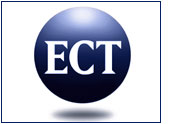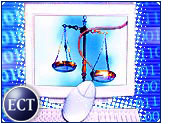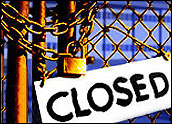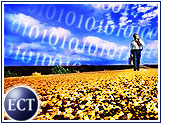
In the following exclusive interview with Bobbi Burns, director of the “eSun” initiative at Sun Microsystems, the E-Commerce Times explores how the multi-billion dollar (US$) company is using its online store as an integral part of its overall marketing strategy.
Q Can you tell us about how your company got started selling over the Internet?
A In 1996, Sun launched an online storefront called “SunPlaza” to sell its aftermarket products. During that same time frame, various divisions across Sun began to sell some of their software products and educational services online via other Sun division-focused Web sites.
In 1998, Sun decided to integrate all of its disparate online selling efforts into one storefront, the SunStore.
The program within Sun to integrate all of its online efforts is called “eSun.” The eSun mission is to design and build a global Internet model that supports a customized view of Sun’s relationships and provides complete content, interaction and transaction capability.
Q Can you give us a feel for the size of your business — in terms of the number of employees, the number of offices, the annual revenues and profits?
A Sun has $15.7 billion in annual revenues, and 35,000 employees in more than 170 countries. Company policy prevents us from publishing the revenue breakdowns along particular trade channels, such as online versus offline sales.
Q What kinds of products or services do you sell on your site?
A Sun’s full range of products and services is available for purchase via the SunStore online buying environment, including hardware, software, and services. The six primary categories on the front page of the SunStore are: desktops, servers, software, storage, hardware options, and replacement parts.
Information about training and consulting services is also available at the SunStore.
Q In addition to your Web site, what other channels do you use to sell your products?
A Sun does not consider the Web to be an individual channel. We look at it as an alternative vehicle for our customers to interact with Sun. From a sales perspective, in addition to our online store, Sun also sells products and services via Sun authorized-auctions on sites such as eBay, Mercata and TekSell.com.
The online efforts work in conjunction with Sun’s direct sales force, “eSales,” formerly known as “Telesales,” and sales through our iForce program partners, i.e. national and regional systems providers.
Q How much traffic are you seeing to your site?
A The SunStore averages 25,000 to 35,000 visitors a day. The Sun.com site averages approximately 150,000 visits per day.
Sun also has over 200,000 registered users who regularly visit “My Sun,” Sun’s personalized portal, and our audience-specific portals for groups that include developers, system administrators and investors.
Q What do you think has helped make your site successful?
A We always look to our customers for feedback and input on our site. We do this on a regular basis via focus groups, online surveys and usability studies.
Based on customer feedback, we prioritize the work that needs to be done to the site and focus on our customers’ needs. Currently, we have determined to put our focus on creating “One Sun” via our Web site, which has also evolved into how our global sales organization is now managed.
This focus will eventually enable our customers to see their entire relationship with Sun online. Via the “My Sun” personalization feature, a customer can view their hardware and software product discounts, as well as order and service status online.
Q What are the demographics of your target customer?
A Sun tends to focus on Fortune 500 companies buying in high volume and repeat business from those companies. Recently, as we started to move into the online auction arena, we found that our customer base is changing somewhat.
About 50 percent of the auction customers are brand-new to Sun, and many of them are startups. We are not sure why that is the case, but it may be that they are more comfortable with the auction process.
Q What have you done on a regular basis to promote your site?
A Sun’s executives and sales organization regularly promote our site whether they are on customer calls or talking to the media and analysts.
Our eSales organization is instrumental in promoting our site to customers and partners. The eReps in the eSales organization regularly walk Sun’s customers through the online buying experience and encourage customers to take advantage of our site’s self-service features that include: checking order and service status online, quoting, configuring, and buying online.
Additionally, Sun’s corporate marketing group strategically places advertising banners on the Internet to draw customers and prospects to our site.
Q What unique challenges exist for companies in your market?
A Our market is a complex model of a B2B environment. Large companies that purchase technology to run their mission-critical businesses often have specific purchasing needs. These purchases more often than not require unique system or solution configurations for their environments.
We are also dealing with very high dollar volumes — orders that often exceed millions of dollars — and sometimes long sales cycles.
The complex B2B environment needs to take all of these factors into consideration. Our market is not easily compared to simply selling commodity items online.
Q What are some of the downsides, or pitfalls, you have experienced?
A While using the Web for our business is exciting, some employees, partners and customers are afraid of change. Sun is currently enjoying much success, and those who fear change use that as an excuse not to change.
Also, while Sun is fortunate to have “networking” in its DNA — we’ve said that the “Network is the Computer” since 1982 — we have found that one of our biggest challenges has been to re-engineer our processes and integrate everything with our backend systems.
Fortunately, we have been able to share our success in overcoming our challenges with our customers that choose Sun technology to run their sites.
Q Were you prepared for this degree of commitment, or did you learn as you went along?
A We were prepared for a 100 percent-plus commitment, but we definitely learned along the way.
Initially, the re-engineering of our business processes with our backend systems was not obvious, but once this challenge was uncovered, we immediately addressed it.
Q What has been your biggest surprise in doing business online?
A We are constantly surprised by how many of our customers are really embracing the Web as a vehicle to conduct business.
They are using our site for their business needs and we are seeing that the volume of people using our site is increasing daily.
Q What type of store software products are you using on your site?
A The majority of the software products that Sun is using are its own iPlanet suite of ebusiness solutions.
Additionally, we use solutions from our partners including ATG, Trilogy and Documentum.
Q What type of payment processing system are you using?
A All of our financials are run on our enterprise resource planning (ERP) system, which is Oracle.
Specifically for our online store, we use Clear Commerce for payment and credit card billing.
Q Where do you see your business one year from now?
A At Sun, we expect that ebusiness processes will be at the core of our business a year from now.
By then, there should no longer be a need for a program such as the eSun initiative, which has been driving such activities at Sun for the past few years.
Q What developments do you foresee over the next year that will have an impact on the world of e-commerce?
A We see the use of wireless devices having to be included in our e-commerce/ebusiness strategy. We also see that the use of auctions will increase for selling hardware and software products and services.
Q What advice do you have for beginners who are interested in selling over the Web?
A Keep in mind that there is a lot more involved than simply flipping a switch to turn on a site to successfully sell online.
Look externally. Look at your customers and determine how they want to work with you online. As we mentioned earlier, Sun uses focus groups, surveys and usability studies on a regular basis to gauge our customers’ expectations of our online presence. In a complex B2B selling environment, you need to determine how your customers want to order from you online. It is not always as simple as selecting a product and submitting a credit card order.
Look internally. If your company already has established sales channels, those channels need to be addressed and aligned to your online selling strategy. You should also look at your current selling processes and determine how they will be affected with the introduction of an e-commerce environment. Simple things to look at up front include: Determining if your customers can submit purchase orders online, or if they want to extend their current EDI/EDE (electronic data interface) purchasing environment to integrate with your Web environment.
Remember, it’s more than technology. Realize that putting your business online is much more than just making a smart technology purchase. You will need assistance to look at your company and determine the change management that needs to take place.
At Sun, we are fortunate to have the best Internet technology at our fingertips. We learned over the past few years that the change-in-management component was just as important as the right technology choices and are happy to share this insight with our customers.












































Social Media
See all Social Media